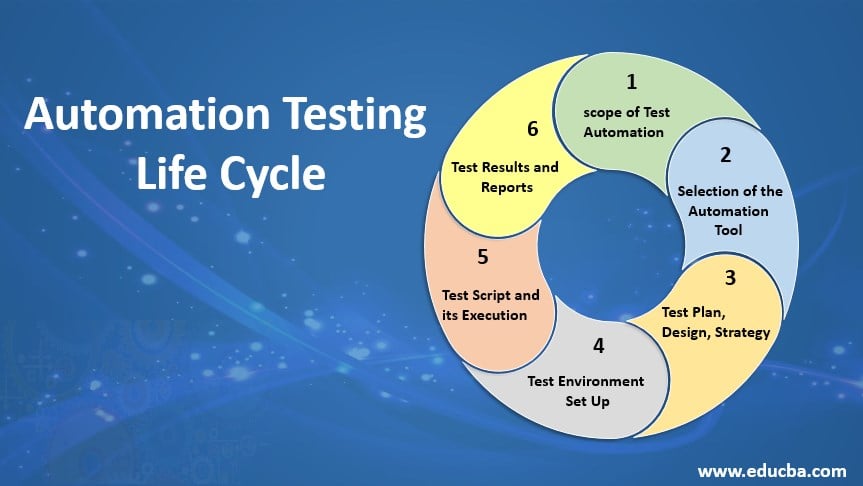Automation Testing: Trick Tips to Enhance Advancement Lifecycles
Automation Testing: Trick Tips to Enhance Advancement Lifecycles
Blog Article
Guaranteeing Success in Automation Examining: Key Metrics, Challenges, and Solutions Every QA Group Need To Know
In the realm of software program quality control, the landscape of automation testing is ever-evolving, demanding a thorough technique to make sure seamless operations. Key metrics function as the compass directing QA groups through the vast surface of test automation, clarifying progress and locations for enhancement. However, challenges loom big, frequently casting darkness on the course to success. By understanding these obstacles and applying effective services, QA teams can browse with intricacies with finesse. The journey to understanding automation screening is paved with subtleties that need a keen eye for monitoring, evaluation, and continual improvement. automation testing. As the market thrusts forward, the pursuit for optimum performance in automation testing continues to be a consistent search, urging QA teams to equip themselves with the expertise and techniques crucial for accomplishment.
Importance of Trick Metrics
Comprehending the importance of crucial metrics is crucial for reviewing the performance and performance of automation screening procedures. Trick metrics act as quantifiable actions that provide beneficial understandings right into various facets of the testing process, such as examination insurance coverage, test implementation time, flaw thickness, and examination situation performance. By analyzing these metrics, QA groups can recognize traffic jams, ineffectiveness, and areas for enhancement within their automation screening framework.
One vital facet of essential metrics is their ability to track progression and keep an eye on the overall health of the screening process (automation testing). They enable stakeholders to make informed choices based upon data-driven insights, which can result in extra effective screening approaches and better source allotment. Furthermore, essential metrics can assist teams set sensible goals, gauge the success of automation efforts, and show the ROI of automation testing efforts

Usual Difficulties Dealt With
Challenges commonly run into in automation testing processes can significantly affect the total performance and effectiveness of QA teams. Automation screening may not cover all elements of screening, such as usability and customer experience testing, which still need hand-operated treatment. Getting rid of these obstacles requires appropriate planning, calculated examination situation choice, robust upkeep procedures, adequate sources, and a clear understanding of the constraints of automation testing.
Effective Solutions for Obstacles
To deal with the challenges run into in automation testing, implementing reliable solutions is essential for improving the efficiency and efficiency of QA teams. One key service is to invest in durable training programs for QA teams to ensure they have the essential skills to successfully utilize automation tools. Training can bridge expertise go gaps, enhance understanding of automation structures, and boost scripting capabilities, eventually leading to more efficient test development and execution.
An additional crucial option is to develop clear communication channels within the QA team and with other stakeholders, such as programmers and job managers. Reliable interaction aids in lining up expectations, sharing progression updates, and without delay attending to concerns or obstacles that may develop during the automation testing procedure.

Tracking and Evaluation Methods
Carrying out effective surveillance and evaluation techniques is essential for making certain the success and performance of automation testing processes. By using monitoring devices, QA teams can track the performance of examination scripts, identify traffic jams, and identify locations for enhancement. Real-time monitoring permits quick detection of issues, enabling quick reaction and resolution. Additionally, assessing test outcomes and metrics offers beneficial insights right into the high quality of the software being checked and the effectiveness of the screening technique.
One key method in monitoring and analysis is the usage of control panels read that settle relevant metrics and KPIs in a visually obtainable format. These dashboards provide a thorough overview of test implementation standing, test protection, flaw fads, and other important details. Routinely examining and assessing these control panels can help QA teams make informed choices, focus on tasks, and optimize testing efforts.
Additionally, carrying out automated informs and alerts based upon predefined limits can improve positive surveillance and prompt treatment. By establishing notifies for efficiency variances or examination failures, teams can address issues quickly and prevent them from escalating. In general, monitoring and analysis techniques play an important function in making sure the efficiency and success of automation testing efforts.
Constant Improvement Strategies
Enhancing the efficacy of automation screening processes requires the consistent improvement of methods and strategies. One crucial approach to improving automation testing processes is to perform normal reviews and retrospectives.

Conclusion
In conclusion, it is vital for QA groups to recognize the essential metrics, obstacles, and options in automation testing to make sure success. By carefully monitoring and assessing data, applying effective remedies to typical obstacles, and continuously boosting strategies, QA groups can optimize their screening procedures and provide high-quality software. Abiding by these methods will inevitably result in extra effective and efficient automation screening techniques.
By analyzing these metrics, QA teams can recognize traffic jams, ineffectiveness, and locations for renovation within their automation testing structure.
In addition, key metrics can assist groups set Check Out Your URL reasonable objectives, gauge the success of automation initiatives, and demonstrate the ROI of automation testing initiatives.
Obstacles typically come across in automation screening procedures can significantly impact the overall effectiveness and efficiency of QA groups. Automation testing might not cover all facets of screening, such as use and user experience testing, which still require manual intervention.In conclusion, it is vital for QA groups to recognize the vital metrics, obstacles, and options in automation screening to make sure success.
Report this page